Overview of the Sigma 10-20mm 1: 4.5-5.6 DC HSM lens (for Nikon cameras) and sample photos from it, especially for Radozhiva, prepared Sazonov Michael.
The Sigma 10-20mm F / 4-5.6 EX DC HSM is a good ultra-wide angle lens for APS-C cameras. This review describes the version for Nikon cameras.
The Sigma 10-20mm f / 4-5.6 is the company's first ultra wide-angle lens designed for APS-C cameras. The lens was introduced in February 2005 and is still in production today (2016). In the mid-2000s, there was a rapid development of the APS-C camera market and companies tried to as soon as possible stake out a place for themselves in a new niche. In the same year 2005 comes out Tamron 10-24mm, a little earlier introduced its Tokina lens. But until 2005, alternatives to native ultra-wide angles (Canon EF-S 10-22mm и Nikkor DX 12-24mm) under the crop was not!
Design
| Focal length | 10-20 mm |
| Diagonal viewing angles | 109.70-70.70 |
| Diaphragm | 4.0-5.6 |
| Min diaphragm | 22 |
| Min focusing distance | 0.24 m |
| Number of elements / element groups | 14/10
3 AS and 3 SLD elements are present in the circuit |
| The number of aperture blades | 6 |
| Thread diameter for filter | 77 mm |
| System | Canon, Nikon, Minolta, Pentax, Sigma |
| Diameter | 83.5 mm |
| Length | 81 mm |
| The weight | 465 g |
The lens belongs to the highest segment of the company's products, as evidenced by the EX marking. It is made of high-quality plastic, has a metal lens mount and an ultrasonic AF drive. The optical design contains 3 aspherical elements - two hybrid and one cast, which positively affects image quality.
The lens is assembled with high quality, nothing loose or loose, the focusing and zoom rings are rubberized. The surface is matte, like all EX lenses of that time. On the body there is an inscription 'Lens made in Japan' and a focusing distance scale marked up to 1 m. The depth of field scale and marks for working in the IR spectrum are absent. There is no AF / MF switch on the body either, switching focusing modes is possible only from the camera.
The delivery set will delight you with the presence of a hood and a semi-rigid cover. The hood is shallow, has a bayonet mount and a flat matte surface without any tricks.
Controls and Focus
The focal length ring is located on the bayonet side, not wide, weakly damped. The ride is smooth, about 45 degrees. The zoom lens of the lens is external: when the focal length is changed, the front lens extends approximately 5 mm in the 'tele' position, and the rear lens moves inside the housing.
When using this lens, I was pleased with the convenient focus ring. In size, it is the same as the zoom ring, has good damping and a decent stroke of 120 degrees. Manual guidance is comfortable. The front and rear lenses remain stationary during focusing, as The lens uses an internal focusing system. The use of filters is not difficult. The autofocus drive uses an ultrasonic motor (Hyper Sonic Motor), so auto focus will be available on any Nikon camera. During the operation of the autofocus system, the manual focus ring remains stationary, and also allows focus correction at any time.
Image quality
The lens gives a sharp picture in the center at any aperture and focal length. Edges and corners slightly sag at 10 mm and f / 4. Covering aperture up to f / 5.6 aligns sharpness across the entire image field. Chromatics are few, which is not surprising with such aperture. The distortion is small, but her character is wrong, so it can be difficult to correct. Vignetting is noticeable - this is perhaps the main drawback of this lens. The lens has a good contrast that does not fall in the backlight. In the case of the presence of a light source in the frame, Sigma joyfully colors the picture with colorful highlights. So, accuracy and thoughtfulness in use has not been canceled. In general, I am satisfied with the image quality.
Photo examples
All the above photos without processing, the development of ViewNX 2. On several frames, the horizon is corrected and cropping done. The shooting was made on Nikon D300swithout using filters.
You can see the source at this link.
UPDATE: examples on Pentax K-5, K-3 II, Valery Chichkin
Examples of photographs on a Sigma 10-20mm 1: 4.5-5.6 EX DC HSM lens in a variant for Pentax cameras with K mount and cameras Pentax K-5 (16 MP, APS-C) and Pentax K-3 II (24 MP, APS-C) shared by a photographer Valery Chichkin (facebook). You can find much more Valery’s works in profile on 35photo.
Analogs and competitors
Below is a list of all ultra-wide angle lenses with auto focus support for cameras with an APS-C sensor (crop Kf = 1.5-1.6X) whose focal length is less than or equal to 14 mm.
Tokina (for different mounts):
With moderate aperture:
- Tokina 124 AT-X PRO SD 12-24 mm F4 (IF) DX Aspherical, for Nikon F, Canon EFS
- promaster Digital af 12-24 XR EDO F4 Aspherical, previous lens under the 'ProMaster' brand
- Tokina 124 AT-X PRO SD 12-24 mm F4(IF)DX II aspherical, for Nikon F, Canon EFS
- Tokina 128 AT-X Pro SD 12-28 mm F4 (IF) DX Aspherical, for Nikon F, Canon EFS
- Tokina AT-X PRO SD 12-28 F4 (IF) DX V, Canon EFS only
Aperture:
- Tokina AT-X PRO SD 11-16 F2.8 (IF) DX ASPHERICAL, since 2007, for Nikon F, Canon EFS, Sony A
- Tokina AT-X PRO SD 11-16 F2.8(IF)DX II ASPHERICAL, since 2008, for Nikon F, Canon EFS, Sony A
- Tokina AT-X PRO SD 11-16 F2.8 (IF) DX V, for Nikon F, Canon EFS
- Tokina atx-i 11-16mm F2.8CF, since 2019, for Nikon F, Canon EFS, black/white
- Tokina atx-m 11-18mm F2.8E, since 2022, for Sony E, black/white
- Tokina AT-X PRO SD 11-20 F2.8 (IF) DX ASPHERICAL, from 2014, for Nikon F, Canon EFS
- Tokina atx-i 11-20mm F2.8CF, since 2020, for Nikon F, Canon EFS, black/white
- Tokina AT-X PRO SD 14-20mm F2 (IF) DX, from 2015, for Nikon F, Canon EFS
fisheye:
- Tokina 107 Fisheye 10-17 mm F3.5-4.5DX AT-X, for Nikon F, Canon EFS
- Tokina 107 Fisheye 10-17 mm F3.5-4.5 DX NH AT-X, for Nikon F, Canon EFS
- Tokina 107 Fisheye 10-17 F3.5-4.5 DX AT-X V NH, Canon EFS only
Tamron (for different mounts):
- Tamron SP 10-24 mm 1: 3.5-4.5 Di II B001, from October 2008, for Nikon F, Canon EFS, Pentax K, Sony A. Japan / China / Vietnam
- Tamron 10-24 mm F/3.5-4.5 Diii VC HLD-B023, from February 2017, for Nikon F and Canon EFS
- Tamron Aspherical LD DI II SP AF 11-18 mm 1: 4.5-5.6 [IF] A13, since 2005, for Nikon F, Canon EFS, Sony A. Konica Minolta AF DT Zoom 11-18mm 1: 4.5 (22) -5.6 D and Sony 4.5-5.6 / 11-18 DT (SAL1118) lenses are built on the same optical scheme )
- Promaster Digital EDO AF Aspherical LD (IF) 11-18 mm 1: 4.5-5.6, previous lens under the 'ProMaster' brand
- Tamron 11-20 mm F / 2.8 Di III-A RXD B060, from April 2021, only for Sony E
Sigma (for different mounts):
- Sigma 4.5 mm 1: 2.8 EX DC HSM CIRCULAR FISHEYE, since 2007 for Canon EFS, Sigma SA and Nikon F. Since 2008 for Pentax K and Sony / Minolta A
- Sigma 10 mm 1: 2.8 DC FISHEYE HSM, from 2007 for Canon EFS, Sigma SA and Nikon F. In 2008 a version for Pentax K and Sony / Minolta A was released
- Sigma 8-16 mm 1:4.5-5.6 DC HSM, since 2010, Canon EFS, Nikon F, Pentax K, Sigma SA, Sony/Minolta A
- Sigma 10-20 mm 1: 4-5.6 DC EX [+ -HSM, + -D], since 2005 for Canon EFS, Sigma SA, Nikon F, Pentax K and Sony / Minolta A. Since 2008 for 4/3 SLR system. 'D' prefix for select Nikon and Sony / Minolta A only. HSM motor only available for Canon EFS, Sigma SA, Nikon F and 4/3. The Pentax K and Sony / Minolta A versions have a different appearance (there is no focusing distance window). There are two sub-versions: with a matte finish and with a velvet finish on the body.
- Sigma 10-20 mm 1: 3.5 DC HSM EX, since 2009, for Canon EFS, Nikon F, Pentax K, Sigma SA, Sony / Minolta A
- SIGMA 10-18 mm 1:2.8 DC DN C, from 2023, for Sony E, FujiFilm X and Leica L
Nikon DX (for Nikon F mount):
- Nikon DX AF Fisheye Nikkor 10.5 mm 1: 2.8G ED
- Nikon DX VR AF-P Nikkor 10-20 mm 1: 4.5-5.6G
- Nikon DX AF-S Nikkor 10-24 mm 1: 3.5-4.5G ED SWM IF Aspherical
- Nikon DX AF-S Nikkor 12-24 mm 1: 4G ED SWM IF Aspherical
- Nikon Nikkor ZDX 12-28mm 1:3.5-5.6PZ VR
Canon EF-S / EF-M
EF-S (Mirror APS-C)
EF-M (Mirrorless APS-C)
RF-S (mirrorless APS-C)
Pentax DA (+ Samsung / Schneider-Kreuznach, for Pentax K mount):
- SMC Pentax-DA 1: 2.8 (22) 14 mm ED [IF] (Pentax 14)
- SMC Pentax-DA FISH-EYE 1: 3.5-4.5 10-17 mm ED [IF] (Pentax 10-17) (FISHEYE, most likely optically identical Tokina Model 107)
- HD Pentax-DA FISH-EYE 1: 3.5-4.5 10-17 mm (FISHEYE, most likely optically similar to Tokina 107 NH)
- HD PENTAX-DA * 1: 2.8 11-18 mm ED DC AW
- SMC Pentax-DA 1: 4 12-24 mm ED AL [IF] (Pentax 12-24) (most likely optically identical Tokina Model 124)
- Samsung Zoom Lens Fisheye D-Xenon 10-17 mm 1: 3.5-4.5 AL, copy Pentax 10-17optical scheme from Tokina Model 107
- Samsung Zoom Lens D-Xenon 1: 4 12-24 mm ED ALcopy Pentax 12-24optical scheme from Tokina Model 124
- Schneider-Kreuznach D-Xenogon 1: 3.5-4.5 10-17 mm ED AL, copy Pentax 10-17optical scheme from Tokina Model 107
- Schneider-Kreuznach D-Xenon 1: 4 12-24 mm ED AL, copy Pentax 12-24optical scheme from Tokina Model 124
Sony / Minolta (A or E):
E-mount (E):
- Sony E 4 /10-18 OSS (2012)
- Sony E 4 /10-20G PZ (2022)
- Sony E 1.8 /11 (2022)
A-mount (A):
- Sony 4.5-5.6 /11-18 DT (SAL1118) (most likely optically identical Tamron model a13)
- Konica Minolta AF DT Zoom 11-18 mm 1: 4.5 (22) -5.6 D (most likely optically identical Tamron model a13)
Samsung NX
- Samsung Lens 1: 3.5 10 mm Fisheye
- Samsung Lens 1: 4-5.6 12-24 mm ED I-FUNCTION
Fujifilm x
- FUJINON ASPHERICAL LENS SUPER EBC XF 8 mm 1:3.5RWR
- FUJINON ASPHERICAL LENS SUPER EBC XF 14 mm 1: 2.8 R
- FUJINON ASPHERICAL LENS NANO-GI XF 8-16 mm 1: 2.8 R LM WR
- FUJINON ASPHERICAL LENS SUPER EBC XF 10-24 mm 1: 4 R OIS
- FUJINON ASPHERICAL LENS SUPER EBC XF 10-24 mm 1: 4 R OIS WR
Zeiss (E / X)
- ZEISS Distagon Touit 2.8 /12 T* (Sony E-mount, Fujifilm X-mount)
VILTROX (E/X/Z)
- Viltrox AF 13mm 1: 1.4 STM ASPH ED IF C (2021, Sony E-mount, Fujifilm X-mount, Nikon Z-mount)
Leica CL/TL/T/L
- Leica SUPER-VARIO-ELMAR-T 1: 3.5-4.5 /11-23 ASPH. (2014)
- Leica SUPER-VARIO-ELMAR-TL 1: 3.5-4.5 /11-23 ASPH. (2014)
Samyang (E / X)
- Samyang AF 12/2E + Samyang AF 12/2X (2021, Sony E-mount, Fujifilm X-mount)
Yongnuo (E/X/Z)
Yongnuo 11mm 1:1.8 DA DSM WL S/X/Z (2023, Sony E-mount, Fujifilm X-mount, Nikon Z-mount)
Do you know more similar lenses? Or do you have experience with any of them? Then be sure to share your thoughts in the comments.
To be honest, recently in the shelf of ultra-wide-angle lenses for APS-C cameras has increased so much that my eyes run wide ...
Conclusion
I liked the Sigma 10-20mm F / 4-5.6 EX. It gives good image quality, well-made and inexpensive. I want to note that this lens is one of the cheapest options for obtaining 10 mm focal length. Its main disadvantages are vignetting and low aperture.
Thanks for attention. Sazonov Mikhail.
You will find more reviews from readers of Radozhiva here.

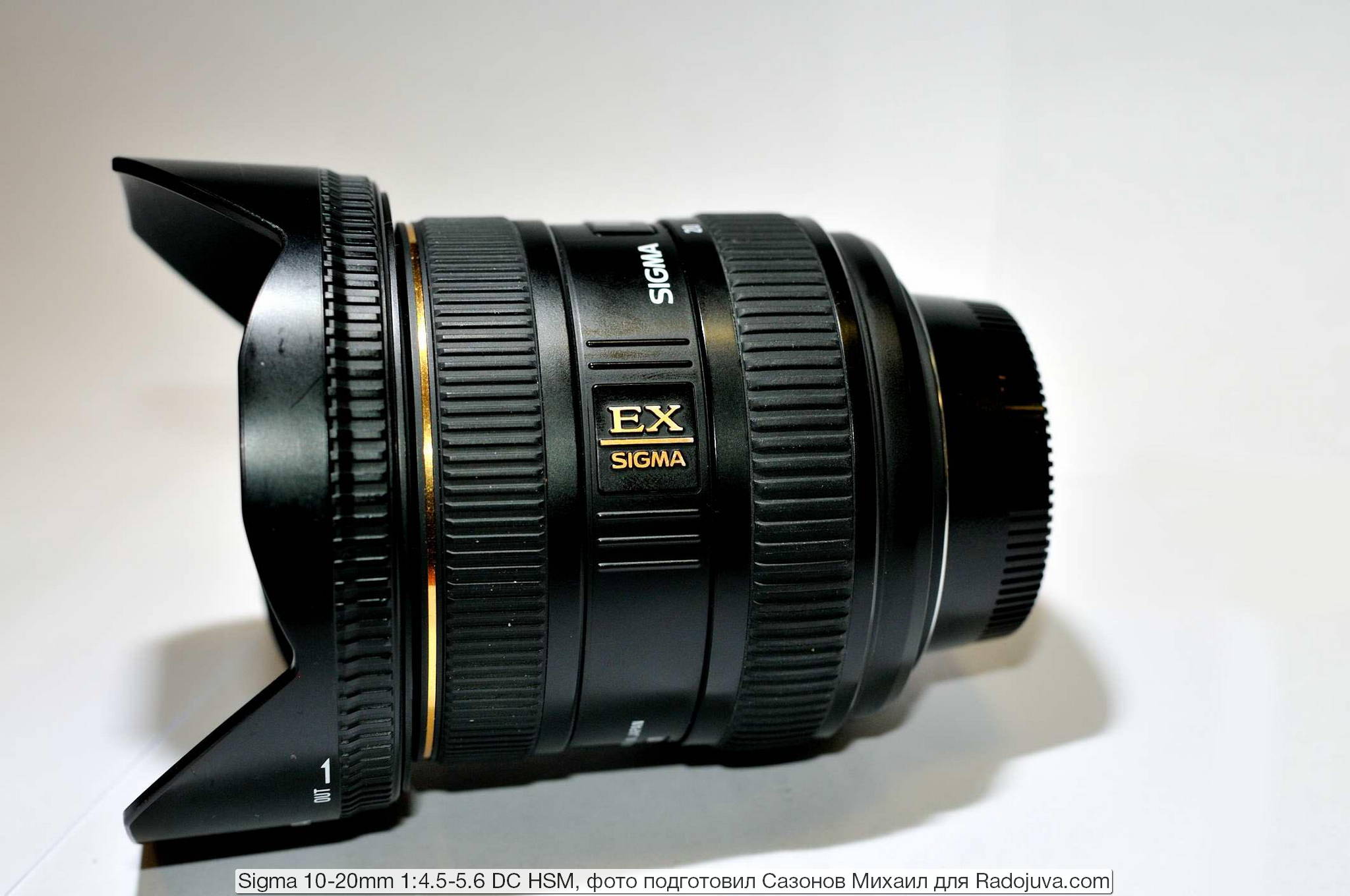
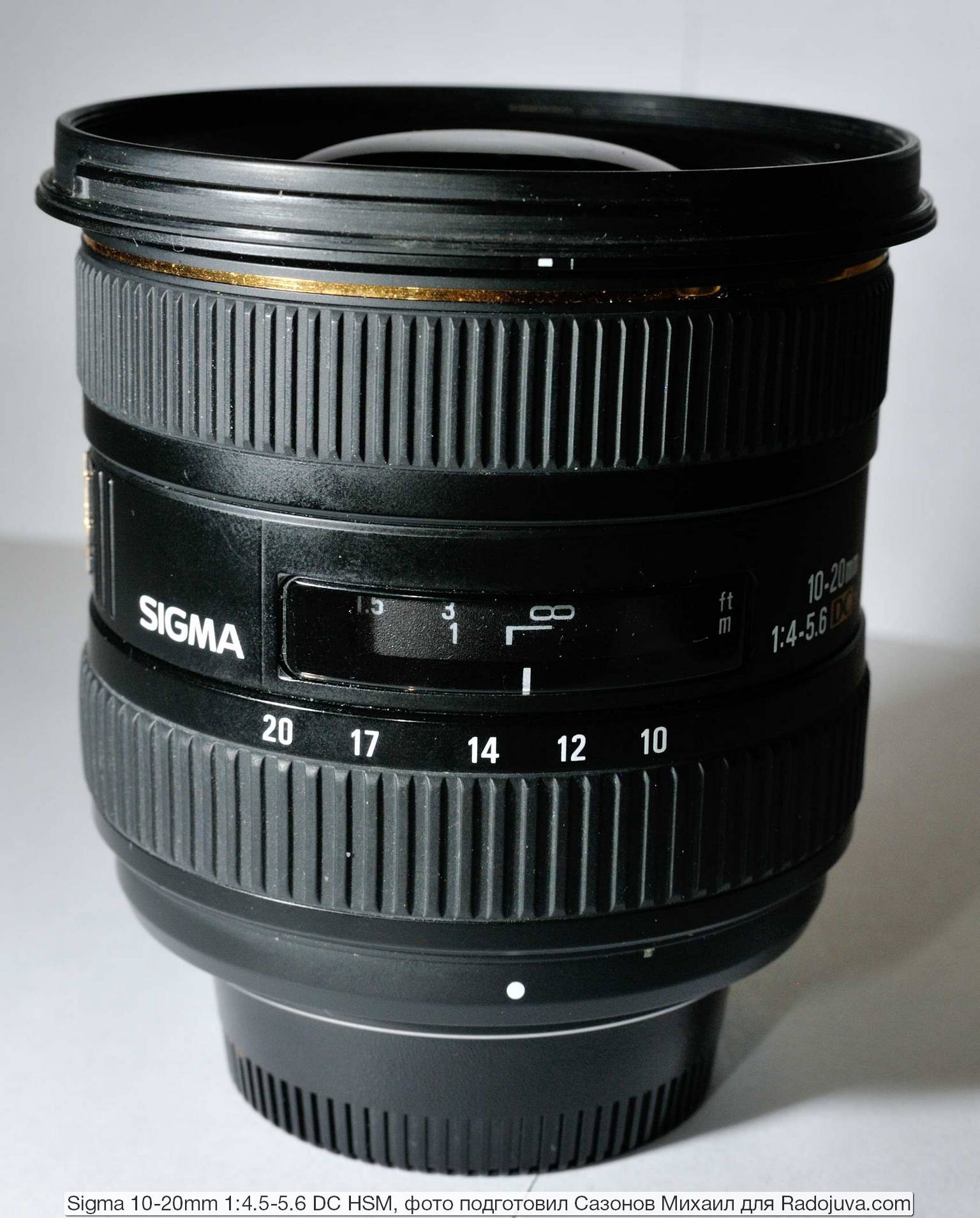
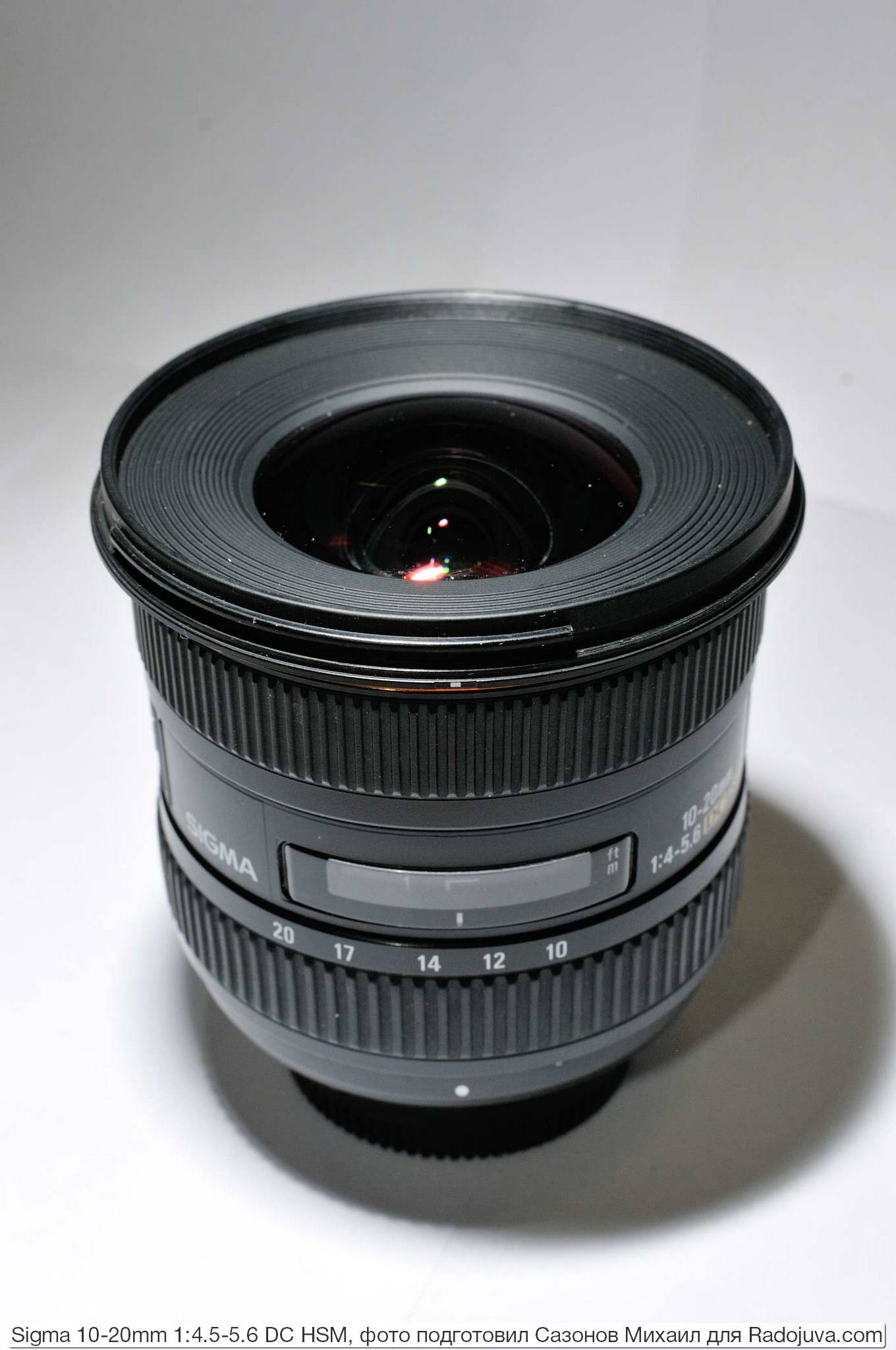
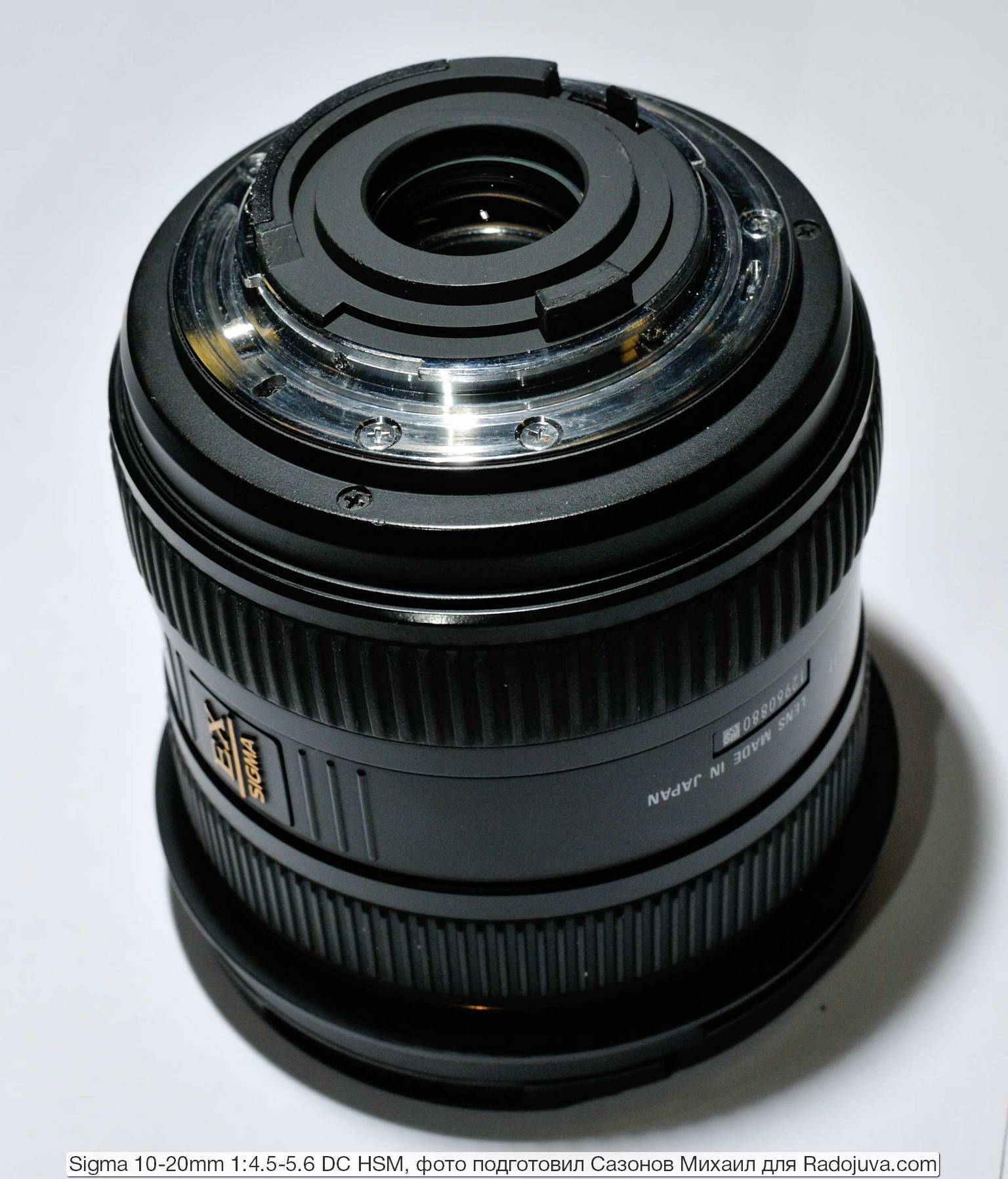
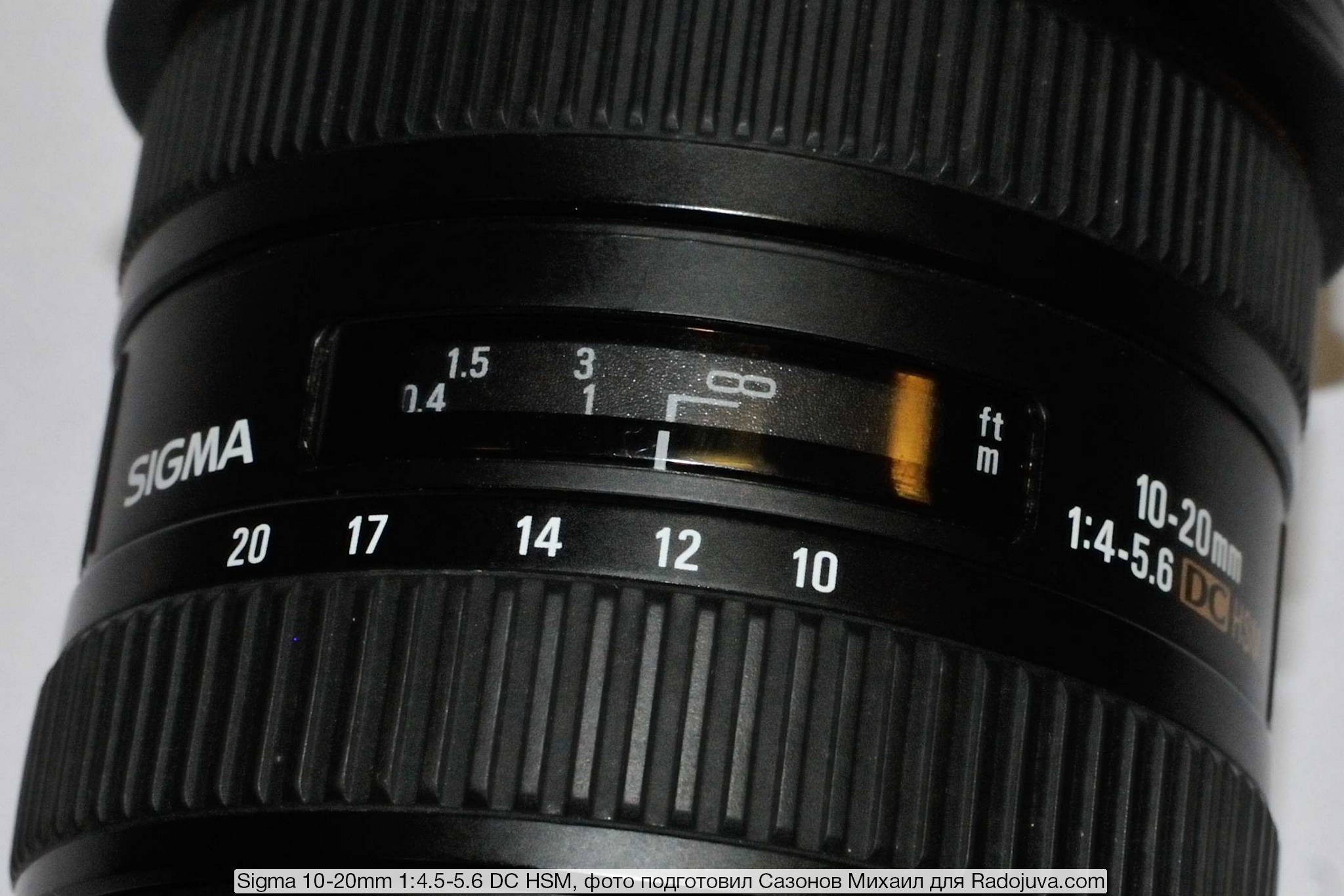


























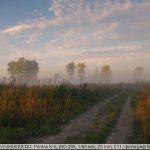


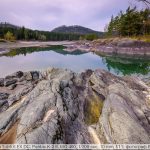
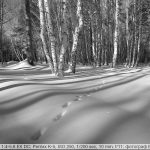


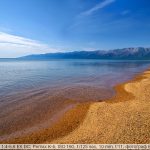

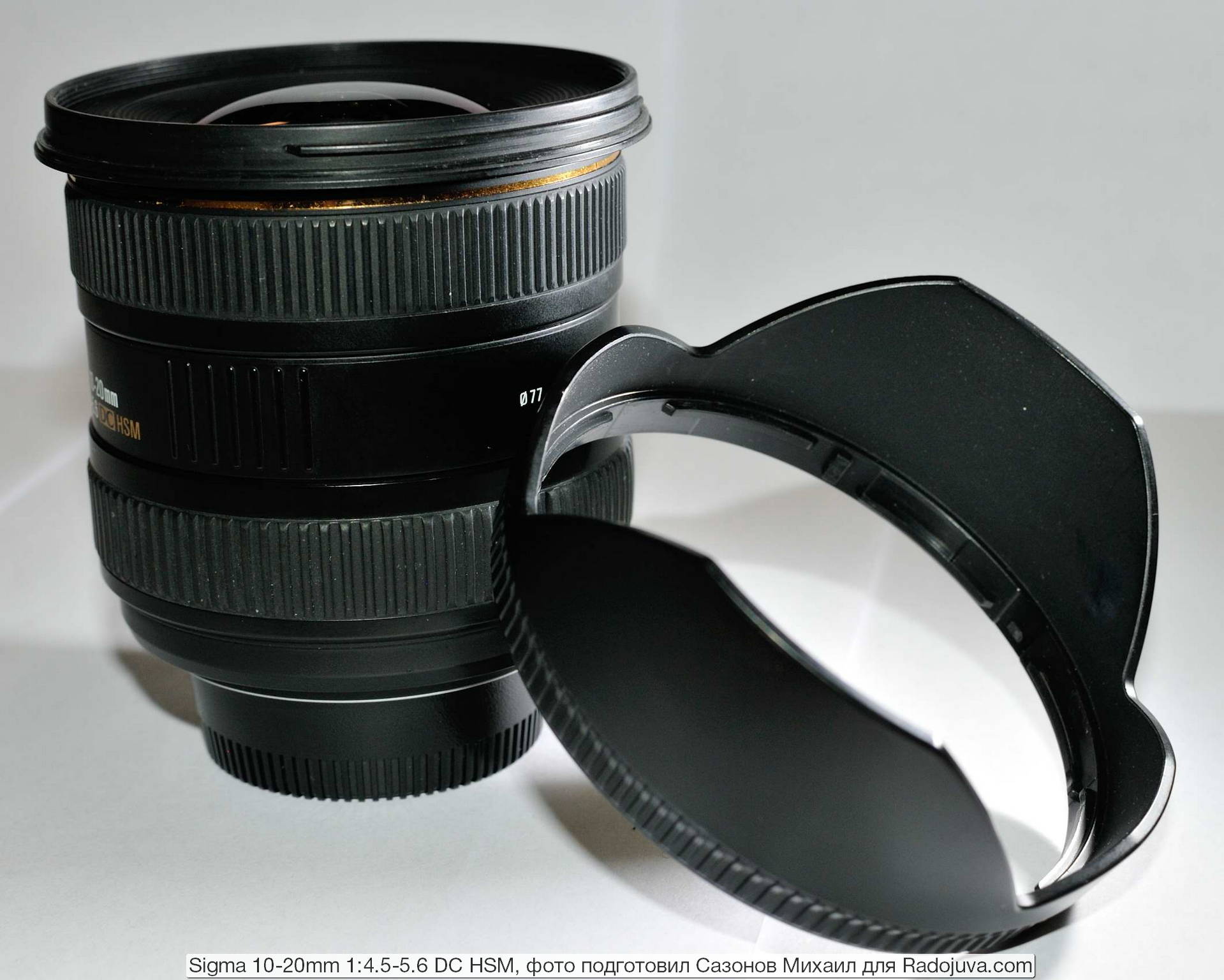
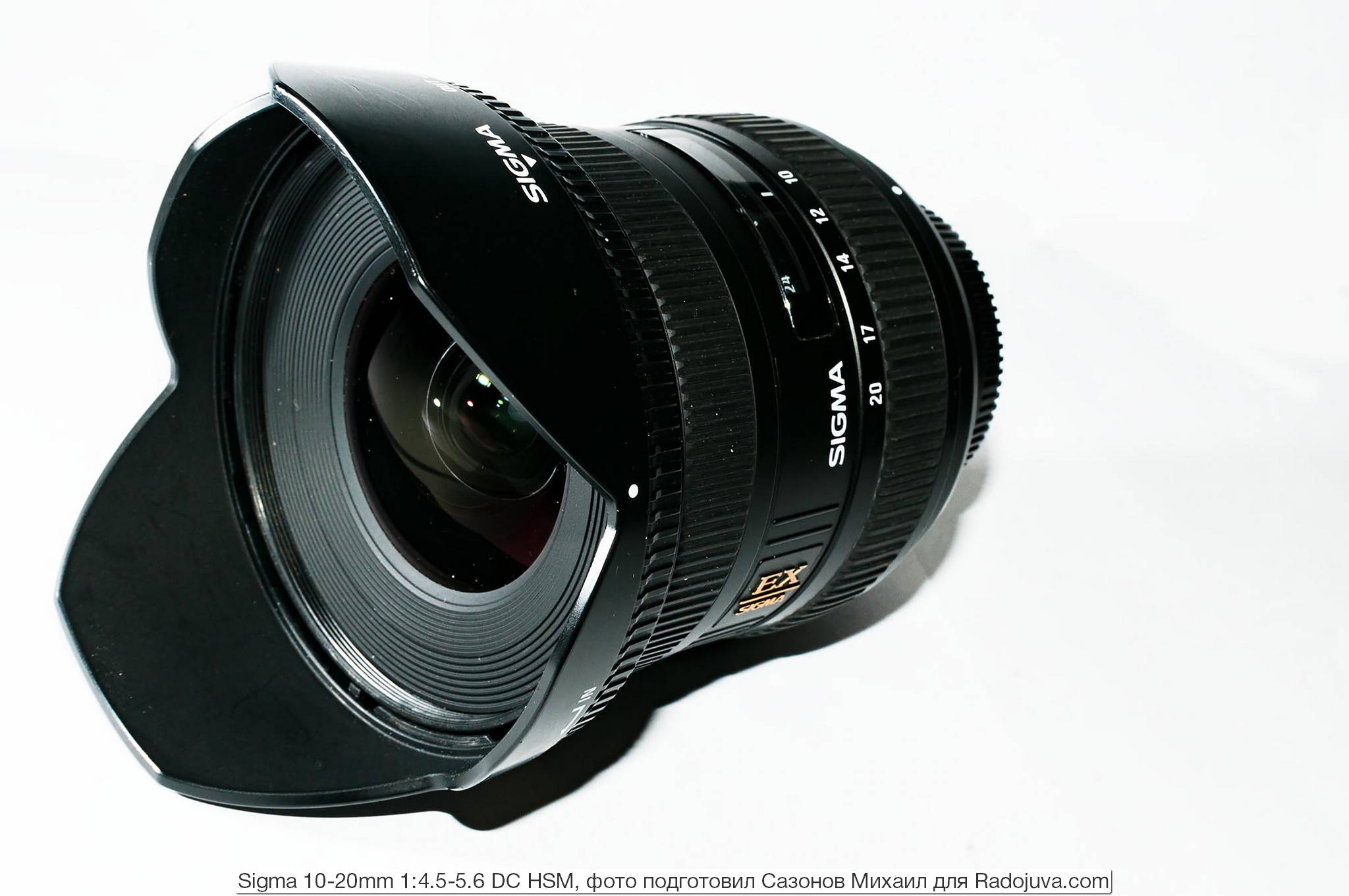

An interesting thing, thanks for the review, the author should clean the matrix, dust is in the eye)
I know, all hands do not reach (
Arkady, correct the typo, it should be like this: Guiding manually is comfortable
oh Michael
Fixed
And 4, not 4.5 (minimum aperture) at the very top of the review.
This will be more difficult to fix.
Can I fix it? Focusing by hand is comfortable. SO.
In the title of the article also correct a mistake with aperture =)
Thanks for your review. I have a Sigma 8-16 mm f / 4.5-5.6 DC HSM. I will not say that the sharpness is higher, in my opinion they are very similar. When I bought it, I wanted the angle to be as wide as possible, but now I hardly use 8 mm - I'm tired of strong perspective distortions. 10mm at the wide end is the optimal focal length in my opinion. Apparently this is why so many lenses have been released with focal lengths starting from 10 or 12 mm.
Judging by MTF, yours should be much better at the edge of 8 mm. Not happy only the lack of thread for filters.
Exactly. That's why I bought a Canon EF 16-35 mm f / 4L IS USM for the full frame. Although Tokina AT-X PRO FX SD 16-28 and Tamron 15-30 mm f / 2.8 Di VC USD look better in tests. The ability to use a gradient filter (without Benro FH150 halobuds) excuses in this case, a little less sharpness.
http://www.benro.com/Products.aspx?cid=218&pid=376&nid=385
I bought one in Germany a long time ago. I liked the assembly very much, I took it as I really wanted shirik, and this Sigma is both autofocus and relatively inexpensive, another thing is that over time there was a feeling that it does not always fall into focus, but the flu is very wide, which smoothes the miss. Its distortions, I suppose, are made so deliberately in order to give the landscapes a sense of volume.
On d90
At night
On d40
Architecture
The D 90 is long gone, just like the D40 I had back then. Changed to D3300 and D5200. I immediately put this Sigma on one of them and didn’t find autofocus ;-( I put it on the D200 and forgot. Recently I got the opportunity to go to shoot plenty, I needed a width, I wanted to take the “same” D ****, I started thinking about a similar Nikkor AF-P, read the reviews - I didn’t like it. I decided that I could do without autofocus - I put it on the D5200 (firmware C 1.02), while the AF-P 70-300 works fine on it.
And most importantly, it worked great - including autofocus. I don’t know what’s the catch or I initially set it only at 3300 or did something wrong that time or it’s a New Year’s miracle . Also, when updating, pay attention that it is not so easy to find old firmware on the network, at least I did not find it.
I have been using this lens for 7 years. Very good. I took it on Nikon d300. Since then, I have changed to d610 and d810. Works confidently at full frame (in crop mode, of course). As for sharpness and contrast, it did not fail. And recently he began to shoot a video with him. It turns out a clear wide picture, it is absolutely undesirable to use zoom at the time of video shooting (sound clicks in the zoom drive appear in the view). As for the aperture, the title says that it starts from F / 4.5, but in fact - 4.
An excellent lens for me. For my taste, one of the most successful sigma from the ex series, along with 17-50 2.8os. At one time, I bought two of these at once for Nikon and Canon - I made a comparison of the same lenses on different systems and compared sigma with Canon 10-22, 10-18is and 17-40 4L on ff. Practice has shown that despite the fact that in comparison there were native Canon lenses, sigma was not particularly inferior to them. In some cases, even outplaying in sharpness 10-22. Also compared with Tokin 11-16 2.8. And here on the tokin they upset the huge ha, which even with cover get out. Sigma had everything ok with this. I tried a few more shiriks for a crop, but I didn't own them, so I can't really compare. I only remember for sure that tamron 10-24 is straight very much merges sigma both in sharpness and in aberrations.
I also compared this sigma with the same, but with an aperture ratio of 3.5 throughout the entire segment. It turned out to be soapier even on similar diaphragms, which was not weak. It seems like sigma 10-20 3.5 is more expensive and, in theory, a higher class, because the constant aperture, but in fact the lens disappointed. As a result of all these comparisons, only the Canon 10-18is was left on the crop, which is a bit sharper in the corners, and, most importantly for me, has a stub. And on Nikon I left this lens from the review - sigma 10-20 4-5.6. On the d3300 and d5200 the lens does not allow a small-pixel matrix, but in general everything is not bad, on the d7000 and d5100 it is already better in terms of matrix resolution, and on the d70s, d80, d200 and fuja c5pro everything is just fine, since the lens has enough resolution in the head for such small-pixel matrices. If you don't dig, then 24 megapixels look quite nice for this sigma.
I was “lucky” to own this lens. It lasted half a day. Then I barely returned the lens to the store. The color rendition is nowhere worse. Sharpness ... The zoom ring turned almost with a creak. A week later I took NIKON 10-24. Much better, and slightly more expensive.
Whitened rubber on the lens, is it somehow treated?
I had one, an excellent lens, it reveals small spaces well. There were no complaints about the quality of the picture, when it started to take pictures it took about 2 months to get used to because it would competently fill the entire frame by 10 mm is not so simple. Filmed people on the street. Also suitable for landscapes and slightly less good for architecture.
This was shot on him:
https://www.instagram.com/p/-gdURvrSJT/?taken-by=vasyliytver
https://www.instagram.com/p/-l8wytrSNg/?taken-by=vasyliytver
https://www.instagram.com/p/BAAzCqyLSLk/?taken-by=vasyliytver
https://www.instagram.com/p/BEwFTEdrSCu/?taken-by=vasyliytver
Please tell me how to install this lens with a Nikon mount on a CANON 600d camera so that there is autofocus.
No way. Sell and buy a version for Canon.
thank you understand
Hello! Please tell me whether autofocus will work on mine before the flood like nikon d3000, without a screwdriver. I really want to buy glass, because I’m going to the mountains in Adler in September. thanks
> The autofocus drive uses an ultrasonic motor (Hyper Sonic Motor), so autofocus will be available on any Nikon camera.
Quote from the article (on the benefits of reading)
Thanks. I thought so too. But because delitant read the forums and was surprised by the post about the lack of autofocus on cameras without a screwdriver. I have a sigma hcm apo 120-400 on which this motor does not work from the factory. I twist the focus with my hands. Enough for the birds. Extremely unreliable thing xcm. But I think it's normal to buy such a telephoto new for 6 thousand. Thanks for the answer.
You're welcome.
Buy a non-working Sigma factory under 400 and twist it with your hands? You have a medical institution on your site comrade!
The issue of price and freedom of choice. And you have good manners on the site.
)))
Oluh) I bought it on Avito for 6 rubles. Not at the factory. It was just a marriage and it was handed over to the service. Learn how to read a nut) this glass is new 30)
Good afternoon! I want to thank Arkady for the non-biased and professional reviews. This is a great work worthy of respect. Special thanks to the co-authors, in this case - to Mikhail! Low bow to you guys, I say without pathos, from the heart!
I’ll add a few words to the address of this lens. I’ve been renting them for six to seven years. I bought it, because it was significantly cheaper than my native Nikkor 10-24. Tokina 12-24, also, was more expensive, as well as a faster aperture Sigma with similar focal lengths. Tamron somehow did not attract attention.
The lens as a whole is a solid “average”. Outwardly, everything is simple, I would say, on a budget, except that the golden stripe and the inscription EX et made in Japan give a certain charm :) But the lens is bought not for admiring, but for photography.
The sharpness in the central part of the frame is subjectively higher than average, at the edges, as the author wrote, is rather weak, but it improves significantly by covering the aperture to 8-9, in fact, this is the most working landscape aperture of this lens, you should not pinch the aperture anymore. I shoot mainly with focal lengths 10-14, rarely go beyond this range (I would prefer a 12 mm fixed lens but without a convex lens like Samyang’s, because I catch filters (ND and CPL).
I consider the peculiarity of this lens to be a not very pleasant distortion of the horizon line at the edges of the frame, more pronounced at the very minimum focal lengths and at horizontally oriented frames. Its essence is that at the edges the horizon begins to bend in a smooth arc downward, moreover, not like with fishey along the entire horizon, namely along the edge segments. Therefore, care must be taken to avoid this phenomenon.
In general, the lens is decent, despite some of the above nuances. The angle is very wide, allows you to take beautiful artistic shots, contrast and sharpness are quite decent, HA is minimal. Therefore, if someone chooses a wide-angle lens for a reasonable price, then I recommend it!
PS I think that wide-angle shooting is a stage that needs to be mastered deliberately after ordinary shots, “for every day”, taken with simple whale lenses. It requires skills, slowness, the ability to find the right angle. For me now, perhaps, this is my favorite lens, opening up creative spaces in landscape and architectural photography.
Thanks for the interesting review.
Oleg, you need to clarify. Distortions, including skyline. Do you mean jpeg directly from the camera or taking into account the application of the profile? Because in ACR or LR, applying the profile of this lens decently changes the situation, both with vignetting angles and distortion, including those that you described. Well, the sharpness (even on cover), in my opinion, still needs some amplification. On architecture, this is especially noticeable. I agree with you that for the price-result this is a very worthy lens. Everything comes out of ACR / LR very, very good. But not jpeg out of the box.
Valentine, yes it’s about jpeg, obtained as a result of shooting. I did not use lightroom, maybe something can be changed with modern versions of software. Usually I tried to find such an angle so that there were no such moments or cut the picture. In terms of sharpness, yes, I agree, but with SS-zoom lenses, the sharpness is still worse than with medium-focus zoom (the same 16-85 or 18-70). I think the same Tokin 11-16 for sharpness which is very much praised can also be slightly sharpened before printing, I saw a photo from it and compared it with sigma. And then, I think the quality of the copies can also vary widely.
Oleg, I see. I finish the result, and the glass completely suits me. The direct jpeg from my instance and the instance from this review does not impress me.
Good day to all. I want to take this lens (or another shirik) for myself. But doubts torment me. The lens came out in 2005, and I have a Nikon D7200. So is there enough resolution for this lens on my camera. Just after hearing a lot of praise, I bought something like 18-200, so that for all occasions. And he turned out to be soap-soap. My whale 18-140 is just a razor compared to 18-200. Here again, I thought about how this lens behaves on modern cameras (I do not ask about the D80). And is there a resource somewhere to see which lenses are suitable (by resolution) and which are not suitable for my Nikon D7200.
I understand that this is not relevant for you. But it can help others. Apart from the widest angle, the built-in motor and the low price, there is not a single advantage. He allowed d5100 to be useless, but it was still tolerable. At d7200 at 100 percent magnification soap. Solid. At any focal and any aperture, in any part of the picture. Took d40 from a friend. And suddenly the lens saw the light. Sharpness of lines, micro-contrast - at the height. Conclusion: the lens draws decently on low-resolution matrices. The lower the better. That is, for any multi-pixel camera, this lens is just a toy, without a creative drawing. Now about the advantages: with such apertures and focal lengths, respectively, with such a depth of field, the very need for a focusing motor is completely leveled. A wide angle is carried by heaps of tokin, tampons, not to mention nikkors, which can better resolve a multi-pixel matrix. The price remains. The only thing that can justify me and my toad choking me when buying a wide-angle station wagon because of the cheapness of such a wide angle for a crop. I'm very sorry to buy
Owned this lens for several years. I sold and bought Tokin 11-16 / 2.8. Tokina, without a doubt, is much sharper than the Sigma described above. If before, he often used vignetting of the edges on Sigma with the goal of reducing soaping, then Tokogh requires it. I advise those who have doubts to give preference to Tokin, if they are faced with a choice.
Hello! So I’m thinking of buying this lens, but without the ability to try to shoot. Do they even really take pictures of dancing people indoors? Or is it more intended for shooting nature, and will it distort people?
Can you recommend an inexpensive shirik for my purposes on the Nikon D90? Thanks in advance!
I have seen a huge list of analogues and competitors, but it is difficult to understand which of all this will suit me best ...
It's a bit dark for rooms, and shooting in motion. Of course it will distort, especially around the edges. Probably better, something like 17-50 2,8.
Good afternoon!
Help decide on the choice for Nikon D7000, it is possible to purchase at one price: Sigma from this review and Tokinu AT-X PRO SD 12-24 F4 (IF) DX II Aspherical.
If possible, it is better to watch both lenses live. Many people like tokina, sigma seemed to me better (compared with DX 1)
Unfortunately, this is not possible. Both lenses are in different cities and you have to go after them. Tokina is closer to me by 20 kilometers :)
Even identical Sigmas delivered to Russia are drawn differently. Just choose and compare!
Good day. Autofocus is not working on my D3300. The service center in Moscow on Kurskaya confirmed. Does not work. And I like the lens so much…. Voros, can anyone know - Sigma 10-20mm 1: 3.5 DC HSM EX on D3300 will work?
Thank you
With all respect, Andrew
D3300 and Sigma 10-20mm 1: 4.5-5.6 DC HSM.
Have you updated the firmware for a long time?
If it costs 1.02 (and maybe 1.01), roll back to an earlier one.
The latest firmware makes the autofocus of any sigma inoperative.
Thanks, got it.
I updated the firmware.
I don't want to roll back to the previous version.
I use lenses with AF-P.
In this case, you will have to abandon sigma, which is sad)
Well, or use it without autofocus, which is not so scary in the case of a width.
Sadly not the right word. The trouble came from where they did not expect. I study Tamron s, Nikkor s, Tokin s. Thanks, Victor
It is written - HSM. So with a motor.
Thank! The author is great! Without hu-hu and depression. Without "Kitovsky" and "full format". Everything is clear and to the point!
Hello everyone. I'll add a little - this lens has two versions, one as in the review, the second has a velvet coating. The first has a serial number of 8 digits, the second has 7. Different factory packaging. Everything is pretty much the same (the only difference is that there is no velvet coating in one) The version is newer without velvet cover.
Thanks. It's actually even more complicated there - there are 'D' versions for some Nikon and Sony / Minolta A. The versions for Pentax K and Sony / Minolta A do not have a focusing distance window.
the picture shows two lenses of the version for NIKON
Aperture 4.0-5.6
4.5-5.6
I have been using it for more than a year, the whale was thrown, I only use this. Before buying, there was a dilemma, which one to buy, the choice was huge, I bought this one (for the canon), I never regretted it - for landscapes, especially at night, an irreplaceable thing, architecture, and so on. In conjunction with 55-250, the picky amateur doesn't need anything else.
And so
And here's another
Kenon 50dB if that